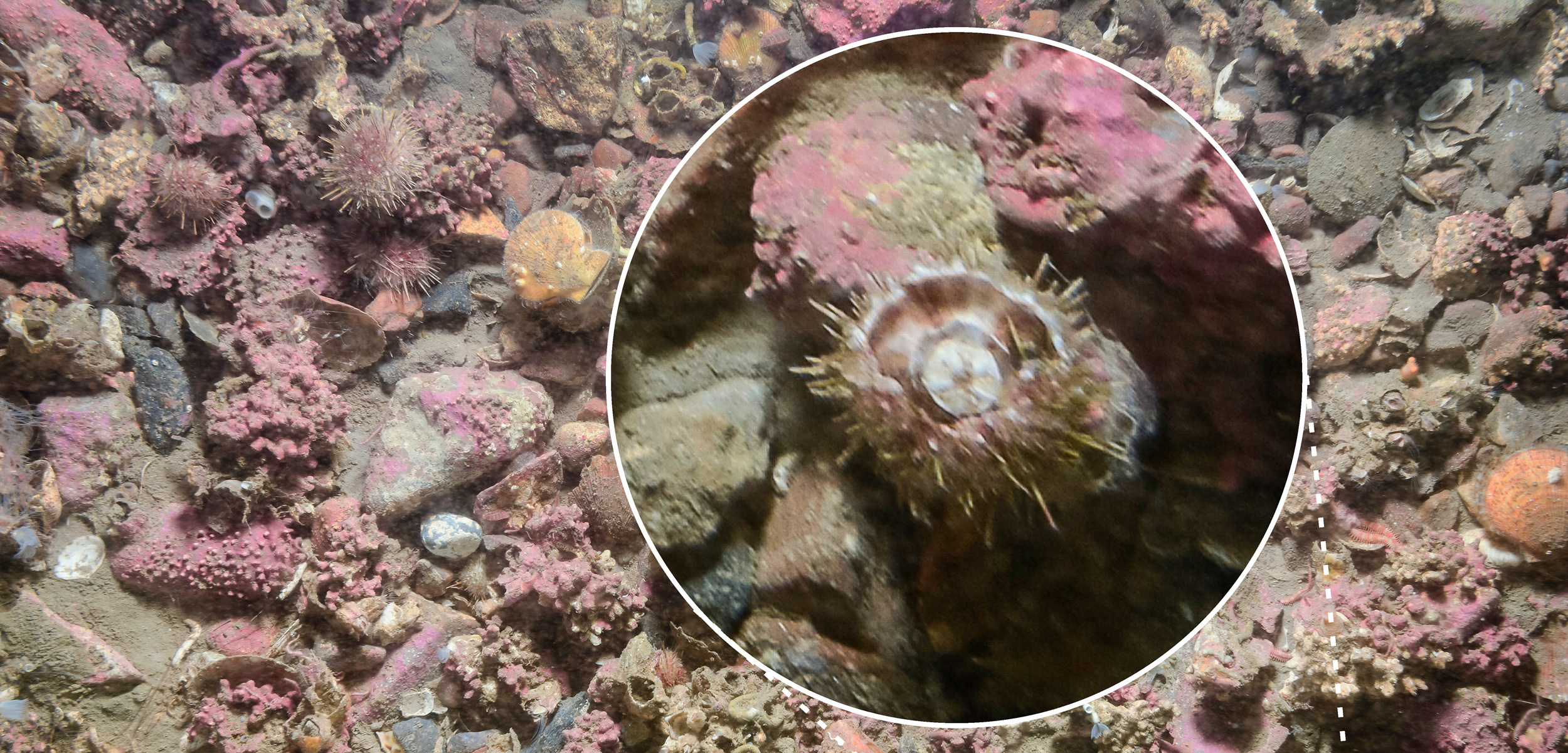This Sea Urchin Just Won’t Die
An urchin that survived two apparent attacks showcases the animal’s astonishing resilience.
Article body copy
In the freezing, inhospitable water off Norway’s Svalbard Archipelago, a wounded sea urchin the size of a walnut staggers across the seafloor. Its precious gonads and half its shell are missing, yet it clings to life for more than 43 hours. Lucky for scientists, they caught the nearly dead urchin on camera, allowing them to witness, for the first time in the wild, sea urchins’ stunning capacity for survival.
“It was an accidental observation,” says Max Wisshak, a marine biologist at Senckenberg am Meer research institute in Germany. Wisshak and his team were on a mission to the Arctic to study marine organisms, as well as water conditions such as temperature, acidity, and salinity. Using a custom-built lander equipped with a camera, they captured images of the seabed in 10-minute intervals for six days.
“The resulting series of hundreds of images gave us the great opportunity to study the dynamics and interactions of various bottom-dwelling animals,” Wisshak says. Of these, sea urchins of the genus Strongylocentrotus were fairly common. But it wasn’t until Wisshak began analyzing their movements with motion-tracking software that he spotted the severely wounded urchin.
When the urchin appeared on camera, it was already missing the upper half of its calcified skeleton, called a test, and some of its organs. The researchers believe the urchin may have lost these to a fish or crustacean—predators that rupture the test to get to the soft tissue inside.
As if that wasn’t enough for the poor urchin, images then showed a great spider crab tackle the urchin with its pincers, biting off part of its intestines and fully exposing its jaw apparatus or Aristotle’s lantern. Yet somehow the urchin managed to get away.
This time-lapse video captures an injured urchin, bottom right, and an uninjured urchin, top left, moving along the seafloor near Svalbard, Norway. Video by Max Wisshak
Sea urchins have a rather primitive, decentralized nervous system instead of a brain, Wisshak says. Fortunately, enough of the urchin’s nervous system was intact when the crab attacked, enabling it to escape.
This series of events demonstrates the remarkable resilience of the sea urchin nervous system in the face of severe traumatic injury, says Andrea Bodnar, science director of the Gloucester Marine Genomics Institute in Massachusetts. The nervous system’s ability to function while damaged is likely essential for urchins to mend their wounds and survive, says Bodnar, who was not involved in the research.
Previous studies have shown that sea urchins can rapidly plug skeletal wounds with clotting cells, and regenerate their test within weeks.
So what became of the sea urchin in question? Though it appeared to have slowed down toward the end of the lander’s deployment, the urchin was still kicking when it was last photographed, says Wisshak.
For all we know, the indomitable urchin lived to see another day.

